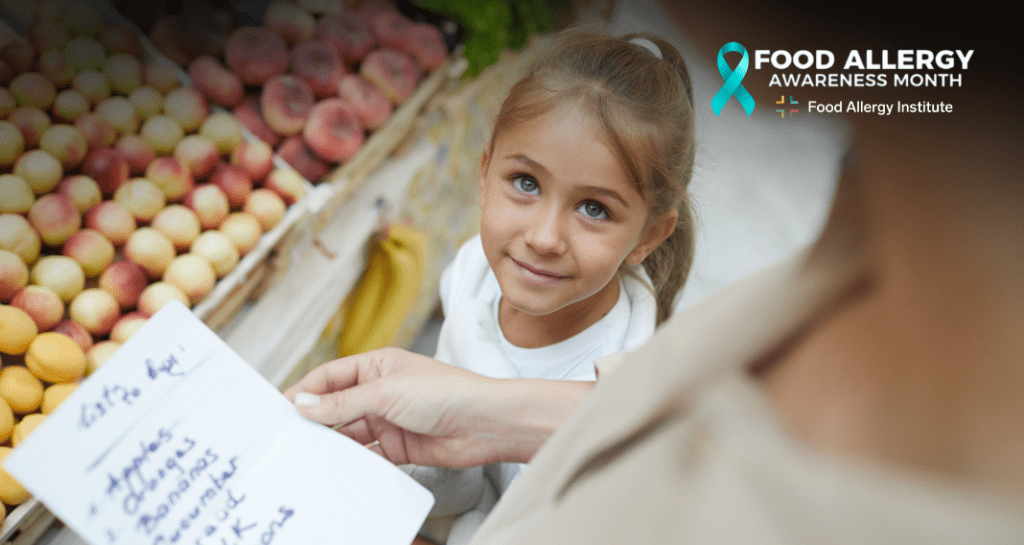 May is Food Allergy Awareness Month—and whether you’re managing a diagnosis or still searching for answers, you’re not facing it alone. This month, we’re teaming up with the Food Allergy Institute to empower families with the knowledge, tools, and real-life stories they need to feel more confident and hopeful.
May is Food Allergy Awareness Month—and whether you’re managing a diagnosis or still searching for answers, you’re not facing it alone. This month, we’re teaming up with the Food Allergy Institute to empower families with the knowledge, tools, and real-life stories they need to feel more confident and hopeful.
Throughout May, we’ll be spotlighting:
🔹 Common food allergy symptoms in infants and children
🔹 What to do after a diagnosis
🔹 Expert Q&As and LIVE interviews with allergy specialists
🔹 Stories from parents whose children have found remission through the Tolerance Induction Program™ (TIP)
Whether you’re just starting your allergy journey or exploring treatment options, this is your space to learn, ask questions, and connect with others who truly get it.
Ready to start with the basics?
What is a food allergy?
A food allergy occurs when the immune system mistakes a harmless food protein (an allergen) as a threat and launches an attack. This overreaction triggers the release of chemicals like histamine, causing symptoms that range from mild discomfort to life-threatening anaphylaxis.
If you’re allergic to a food, your immune system produces Immunoglobulin E (IgE) antibodies, which recognize the allergen and cause the release of inflammatory chemicals throughout the body, leading to what is known as an allergic reaction (NIAID, 2020).
Food Allergy Vs. Food Intolerance
It is important to note that food allergies are not the same as food intolerance. Food intolerance occurs when the digestive system has difficulty breaking down a particular food. This can result from enzyme deficiencies, sensitivities to certain chemicals, or reactions to naturally occurring substances. Common symptoms include bloating, gas, stomach pain, or diarrhea. Unlike a food allergy, a food intolerance does not involve the immune system and is not life-threatening, though it can cause significant discomfort.
What Does an Allergic Reaction Look Like?
Symptoms can appear within minutes or up to two hours after consuming the allergen. Common signs include:
- Tingling or itching in the mouth
- Hives, itching, or eczema
- Swelling of the lips, face, tongue, or throat
- Wheezing, nasal congestion, or difficulty breathing
- Nausea, vomiting, or abdominal pain
- Dizziness or fainting
Symptoms of Anaphylaxis
Anaphylaxis is a severe, life-threatening allergic reaction that involves two body systems and can occur with any food allergen. Anaphylaxis requires immediate medical attention. Symptoms include:
- Constricted airways and trouble breathing
- Swelling of the throat or a sensation of a lump in the throat
- Sudden drop in blood pressure
- Rapid or weak pulse
- Loss of consciousness
Epinephrine is the only effective treatment for anaphylaxis. If you think someone is experiencing anaphylaxis, use an epinephrine auto-injector and call 911 immediately. Do not delay and do not substitute antihistamines in place of epinephrine.
What are the top 9 common food allergens?
The following foods account for 90% of all allergic reactions in the U.S.:
- Milk
- Egg
- Peanut
- Tree nuts
- Wheat
- Soy
- Fish
- Crustacean shellfish
- Sesame (added as the ninth major allergen as of January 1, 2023)
Per U.S. law, any packaged food containing one of these allergens must clearly list it on the label (FDA, 2023).
How Are Food Allergies Diagnosed?
Diagnosis begins with a detailed clinical history, including the nature and timing of the reaction. If a food allergy is suspected, testing may include:
- Skin prick tests, which apply a diluted allergen to the skin to observe for a reaction
- Blood tests, which measure food-specific Immunoglobulin E (IgE) antibodies
These tests help confirm a diagnosis but must always be interpreted alongside a patient’s history and symptoms by a qualified medical professional (Sampson et al., 2014).
Is There a Treatment for Food Allergies?
For decades, families living with food allergies had only one option: avoid the allergen, stay hypervigilant, and live in fear of accidental exposure. The Tolerance Induction Program™ (TIP) at Food Allergy Institute is changing that reality—redefining the standard of care and offering a path to life without food limitations.
Using patient data and advanced analytics, TIP creates a personalized, precision-based treatment plan for each patient. Unlike other treatments, TIP doesn’t start by introducing your child’s most severe allergen. Instead, TIP treatment builds lasting tolerance gradually and safely, retraining the immune system while minimizing risk. See 2024 reaction rates here.
With a 99% success rate for those who complete treatment, TIP is helping thousands of children eat safely and live freely, without food allergy limits.
Wondering if the Tolerance Induction Program™ (TIP) could work for your family? Start with this quick quiz.
Don’t miss our Food Allergy Awareness Month 4-part Facebook and Instagram Live Series this month — created to help parents feel seen, supported, and empowered. Because for many families, food freedom is possible.
Sources
- American Academy of Allergy, Asthma, and Immunology. (2023). Anaphylaxis. https://www.aaaai.org/tools-for-the-public/conditions-library/allergies/anaphylaxis
- Branum, A. M., & Lukacs, S. L. (2008). Food allergy among U.S. children: Trends in prevalence and hospitalizations. NCHS Data Brief, (10), 1–8.
- Food and Drug Administration. (2023). Food allergens. https://www.fda.gov/food/food-labeling-nutrition/food-allergies
- Gupta, R. S., Warren, C. M., Smith, B. M., Blumenstock, J. A., Jiang, J., Davis, M. M., & Nadeau, K. C. (2019). The public health impact of parent-reported childhood food allergies in the United States. Pediatrics, 142(6), e20181235. https://doi.org/10.1542/peds.2018-1235
- National Institute of Allergy and Infectious Diseases. (2020). Food allergy: Overview. https://www.niaid.nih.gov/diseases-conditions/food-allergy
- Sampson, H. A., Aceves, S., Bock, S. A., James, J., Jones, S., Lang, D., … & Wood, R. (2014). Food allergy: A practice parameter update—2014. Journal of Allergy and Clinical Immunology, 134(5), 1016–1025.e43. https://doi.org/10.1016/j.jaci.2014.05.013




















